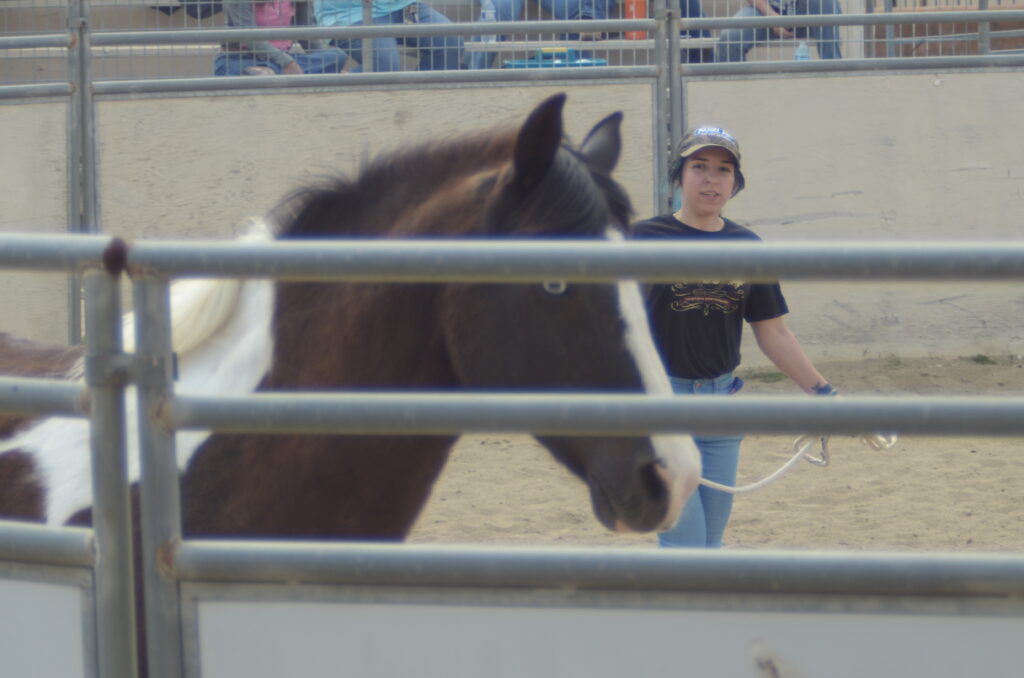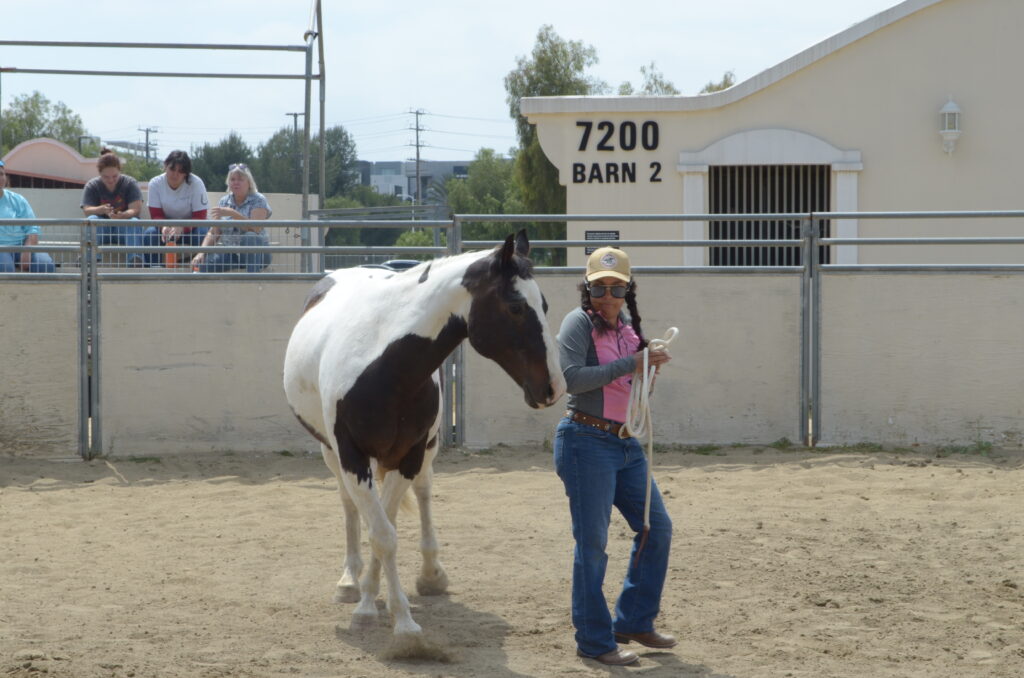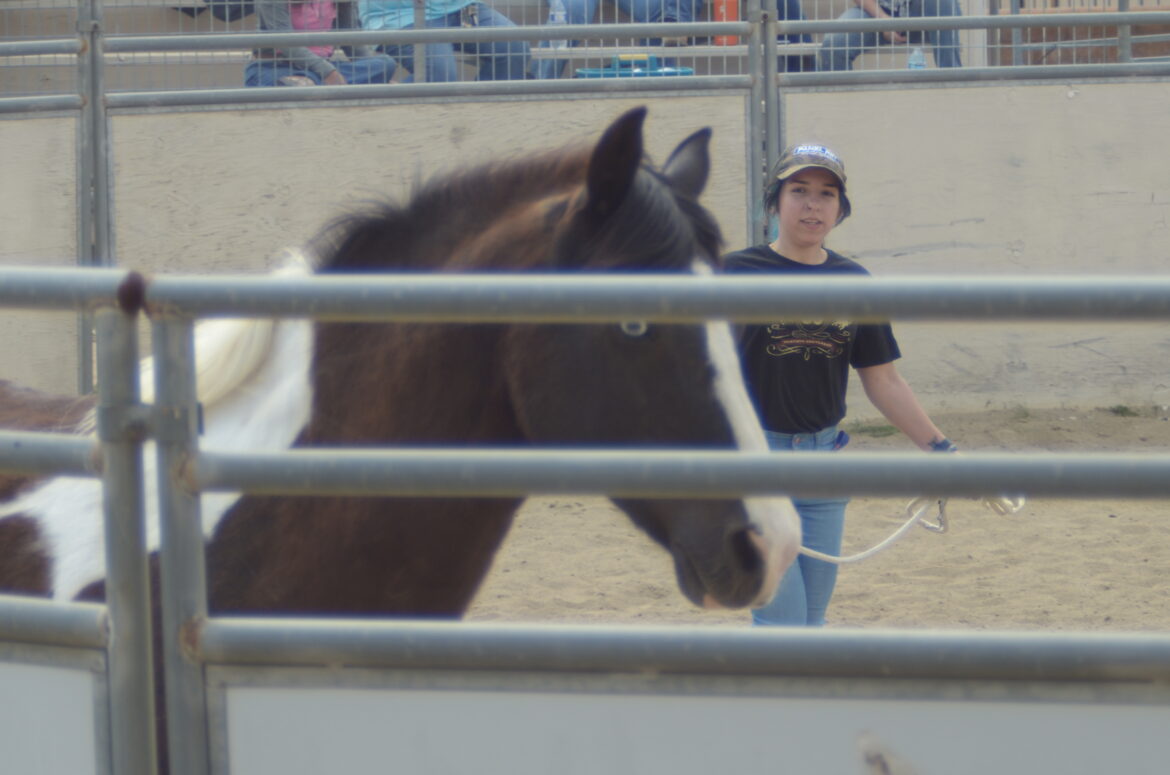Pierce College’s founder completed his vision of teaching about agriculture when the Clarence W. Pierce School of Agriculture opened its doors to its first class of students in 1947.
But now, more than 75 years later, a piece of his vision for Pierce has become murkier.
Recommendations discussed in a February Academic Senate meeting are being considered to help sustain the future of the Equine Science program on campus.
A Program Viability Review Report discussed in November 2023 listed the three recommendations. The first is a collaboration between the equine science and veterinary science faculty to revise the curriculum. The second is ensuring a constant cadre of horses for fall and spring terms, and the third is supporting the maintenance of the Equestrian Center and equine science facilities through human and financial resources, which also includes community partnerships.
In a separate February interview, Interim President Ara Aguiar said she supported three recommendations during the Academic Senate meeting and is looking “into the matter one area at a time,” so that there is a curriculum to package and market.
“You can’t position a product unless your product is ready,” Aguiar said. “And then you can create an idea in your marketing tools and a concept that the consumer can see.”
Heidi Paul, co-author of the Fall 2021 Equine Science Program Assessment and Recommendations report, is glad the report is being paid attention to, and also said the faculty has had little contact with the administration regarding opening up the full roster of classes—most of which have been archived.
“It seems to be kind of a hit-and-miss, and they are missing a lot of classes,” said Paul, an adjunct faculty member for the equine science program, who sees the difficulty students are having in completing their certificates due to limited classes. “Some of these kids are taking four or five years to get through what should have been a two-year program.”

According to the report, costs for the Pierce Farm averaged $477,445 over a five-fiscal-period between 2019-2023. Salaries and expenses in equine science averaged $42,765 in the same period and most of the costs were based “on the pay and benefits of permanent employees of the college who work the farm or support the work of the farm.”
According to Paul, the equine science program was a self run-program, making money through events like Farm Walk, various rodeo and horse shows and students registering to classes.
For the Spring 2023 semester, the total cost—funded through the College General Fund—for the loan of 18 horses was $5,000, according to March 2023 LACCD Board of Trustees documents. The riding horses were intended to be cared for and boarded by the Equestrian Program at Pierce.
In September 2023, the Board ratified a loan agreement for 12 riding horses for the period of Sept. 1, 2023 to June 8, 2026 at no cost.
Assistant Professor in Veterinary Technology and Equine Science Kevin Connolly agrees with the recommendations and said the program is in “various stages of working to achieve all of them.”
“The first goal was to kind of get all those classes back running again so students can graduate in a reasonable amount of time,” said Connolly, who attributed the availability of classes to staffing issues and the lack of availability of horses, with the latter being “taken care of.”
Restructuring is based on the career opportunities present within the equine science industry, which, according to Connolly, includes emerging fields such as animal welfare, occupational therapy, physical therapy and psychotherapy.
“Given all these new potential facets for career paths for students, the restructuring aspects of the program is really centered around, ‘Let’s see if we can try and expose students to all these different possibilities and give them a set of skills that they can kind of use to go into these varying areas,’” Connolly said.
Potential pathways and bachelor’s program
Aguiar also spoke of a possible partnership with Cal Poly Pomona and an opportunity for a baccalaureate program.
In a Senate Executive Committee Meeting with Senior Staff in October 2023, updates on the Equine Science Viability Review Task Force and Report were discussed, which included the possibility of purchasing horses rather than leasing them, and having Cal Poly Pomona offer university classes on the Pierce campus.

According to Equine and Animal Science Professor Nicole Land, students cannot graduate with an equine science degree in a timely manner with the current limited course offerings.
Although Land believes a bachelor’s program in equine science is a good idea, she can’t see it happening without horses and staff who are properly trained in management.
“I think our B.A. needs to be management-based and cover more aspects,” said Land, who also co-authored the Assessment and Recommendations report with Paul and Elizabeth “Betsy” Connolly. “We have the classes on the books and we have archived classes. We need to pull them out and be doing them.”
In a November 2023 Senate Executive Committee Meeting with Senior Staff, Academic Senate President Margarita Pillado “noted that Equine and Ranch Management has been identified as one of the 12 degrees that qualify for expedited approval at the CCCO for a Baccalaureate degree because the CSU has cleared them,” according to meeting documents.
Connolly was not aware of the prospect of a bachelor’s program in Equine and Ranch Management Science at Pierce, but believes it is something feasible.
Paul wants to see the program with a full schedule of classes and the ability to host events to help bring in money.
“Let’s just kind of get things back to where they once were, because it was a very successful program and it was very popular,” Paul said. “When it was run the right way, it did generate advertisement for the school, and a revenue stream.”
Equine science major Raychel Desoer expressed confusion about the classes she needs to take because of the limited selection of classes, which is affecting degree requirements.
“It’s taking longer because I’m just sitting here, trying to figure out what classes I need,” said Desoer, who has taken other classes to stay in school. “[Counselors] actually don’t really know what we’re supposed to be doing if the classes are not offered right now.”
Connelly wants students to know he is working to be flexible with helping students complete degree requirements, and mentioned offering students an “independent project that satisfied the learning objectives” of the missing class.
“I don’t think students should spend three years on a two-year program, especially since a lot of them are really motivated,” Connelly said. “So I just told the students, ‘If you get to that point where you’re really close, and you’re missing a class and it’s not being offered this semester, come talk with me. There’s a little bit of flexibility and we can certainly work things out.’”
Past and present
In 1947, the Clarence W. Pierce School of Agriculture began with 212 World War II veterans on campus. Seventy students were agricultural majors, male and led by 18 faculty members under a Quonset hut on the current location of the farm.
According to Land, the equine science program started around the same time.
By the early 1970s, the school was renamed to Pierce College, with 2,000 students taking classes in agriculture. Pierce also contained a large number of livestock and acres of fields for fruit and vegetables intended for education.
Since then, the program has hosted events like the Camelot March, Farm Walk and Parade of Breeds.
In the Vitality Review Report, between nine horses for Vet Tech and 18 for riding courses are required to meet Student Learning Outcome, Program Learning Outcome and safety requirements.
According to Land, there are currently 12 horses on campus, which “is not enough to teach a riding class.”
“I really believed in the program and I really believe in the school but it’s getting harder and harder to have that enthusiasm to drive eight hours in a day,” said Land, who drives from San Luis Obispo to Pierce.
According to the Pierce website, the Agriculture Department is still achieving Dr. Pierce’s original goals, which include educating future farmers, ranchers and equestrians, and preparing students for a four-year institution or graduate school.
In Feb. 23, an Academic Senate agenda item detail showed course deactivation requests for ANML SC 616 (Equestrian Activities) and ANML SC 640 (Horseshow Organization and Management), on account of not being “scheduled regularly.” No course substitution was listed.




